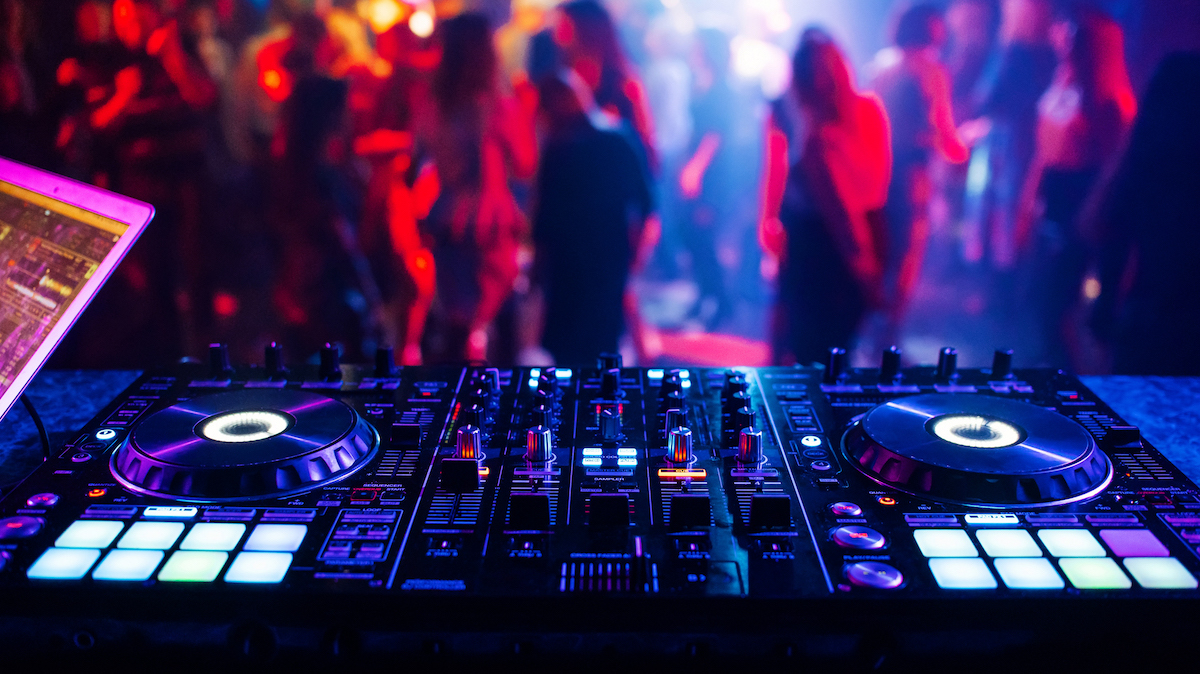5 ways to change tempo in your DJ set: "Big tempo changes can lift a dance floor, surprise your audience, or help you perform a reset"
Want to change tempo mid-set without it sounding like a mistake? Read on…

For many DJs, sticking to a narrow bpm range for their entire set works brilliantly, but what if you want to drop a tune with a radically different tempo to what you’re playing? Many DJs avoid making big tempo changes mid-set, usually either from fear of losing the dance floor - which is fair, changing tempo can be a little risky - but also from fear of performing a messy mix. This is a shame, as big tempo changes can be a super-effective technique to lift a dance floor, to surprise your audience, or to just perform a reset.
So here are five ways you can change tempo in your DJ set without it sounding like you’ve just pushed a drum kit down the stairs. (For all these examples, we’re assuming that you’re mixing two tracks together, and we'll call the current tune that’s playing Track A, and the tune you’re about to mix in Track B).
1. Delay & reverb
Watch from 3.14
Switching music styles or tempos can feel a little awkward on the dance floor and if you train crash the mix it might even totally kill the vibe. One way you can bridge the gap between two differently-paced tunes is using the delay or reverb effect on the DJ mixer to create a mini, on-the-fly, beatless breakdown, which will cause your dancers to pause, rather than tripping them up mid-groove, and enable you to neatly drop something different.
Cue up Track B, making sure beat sync is turned off so that it won’t automatically pitch-lock to Track A. Then (if you’re using it) move the crossfader to the centre and turn up Track B’s fader.
If you’re using the club-standard Pioneer DJM 800, you’ll be using the beat effects section in the bottom right of the mixer - but these principles apply to any software or mixer that has effects. Select the delay effect, and select channel A so the delay only goes to A. If you’re unfamiliar with delays, try out a synced 3/4 delay as they usually sound pretty cool.
You gradually increase the delay on Track A to its full amount over, say, eight or sixteen bars, and maybe cut the bass a little too because as the repeats build it's likely to sound pretty boomy. Then at the end of the eight/sixteen bars, simply stop the track and you’ll be left with a few seconds of decaying delays that will sound a little like a programmed break in the music. Your dancers will take a break and you’ve now got a natural pause to drop some dubstep in the middle of your deep house set.
Want all the hottest music and gear news, reviews, deals, features and more, direct to your inbox? Sign up here.
And you can use exactly the same technique using the reverb effect. Instead of gradually fading echoes you’ll get a three or four-second reverb tail which can sound pretty cool too. Again, you might want to cut the bass a little as a heavily reverbed kick drum can sound pretty full-on over a club system.
2. The Zabiela Technique
For this genuinely creative use of DJ tech, DJ James Zabiela realised that if you use odd-numbered loops and a little bit of maths, then you can mix between wildly different tempos without losing the beat, from house to drum’n’bass and back again.
So the first question is, how does he do it? Like this: he’s mixing two 130bpm house tracks together, creates a three-bar loop out of one and drops the other tune out. Then he uses the reverb and transformer effect on his three-bar loop, making it sound more clipped and choppy. Then, and this is the clever bit, he mixes in a drum’n’bass tune that’s 174bpm and it fits perfectly.
And the second question is, why does this work? Well, the house tune’s bpm of 130 is three-quarters the speed of the drum’n’bass track (130 divided by 3 is 43.4. 43.4 times 4 equals 173.6). Therefore, the three-bar 130 bpm loop also plays in 3/4 time relative to the 173.6bpm drum’n’bass tune. Yes, we know, all DJs are not the same.
Words perhaps can’t quite convey the sonic alchemy of this technique, but when done well - and you really need to be able to count in threes and fours AT THE SAME TIME - it’s just superb.
3. Using the tracks
So this is kind of obvious, but if creating a big, beat-less reverb or delay trail can create a pause on the dance floor that allows a DJ to radically switch the pace up or down, then you can use some of the existing breaks in the tracks themselves for the same purpose.
The key is to use the breakdown of Track A to sneakily drift into the intro of Track B - which is a completely different tempo - without your dance floor really noticing. So you need to use tracks that have breakdowns with no beats, percussion, riffs or basslines, and the tune you mix in has to have an intro made of drifty pads, sound FX, spoken word sections, long sustained drones or strings - anything without a beat, basically. Ideally, you want the tracks to be in complementary keys too, then you just perform a simple fade, mixing the break of Track A into the intro of Track B, maybe smearing it with some reverb and delay to paper over any cracks.
4. Half-speed / double-speed mixing
Watch from 28.17
So strictly speaking, this isn’t a technique to shift tempo, it’s switching between tracks that are either twice or half the speed of each other, but it will certainly allow you to smoothly make a radical switch on the dance floor. If you’re playing say 80bpm hip-hop, you can drop a 160bpm footwork track on top of it and, in terms of tempo, it will fit perfectly. Likewise, you could drop any R'n'B or rap acapella that’s around 70 to 80bpm into your 140 to 160bpm drum’n’bass or juke set, you just have to ensure that the slower track is half the bpm of the faster track. Simple, and super effective.
5. Silence
Watch from 45.20
Many of the greatest early DJ innovators would occasionally completely kill the sound to create tension and drama, and it’s also the perfect opportunity to musically change direction as well. No doubt it’s a bold move, and one to maybe save for the occasional special situation, but as a complete audio palette cleanser and chance to switch the tempo, it’s definitely one of the classic techniques.
Ultimately, if you could boil DJing down to a single maxim, then selection trumps the mix would be a pretty good one, meaning that it’s better to play the right tune even if the transition is untidy, than to play the wrong tune mixed in perfectly. So if you know in your DJ heart that the perfect tune for this particular moment and this particular audience can’t be mixed in time with what’s playing, that should never put you off playing it; and hopefully, some of these techniques will assist you in making an excellent job of it.
Related buyer's guides
- Best DJ controllers: Get hands-on with Serato, rekordbox & more
- Best DJ laptops for the booth and beyond
- Best DJ headphones: from budget to pro-level
- Best DJ speakers for home and the DJ booth
- 9 essential accessories every DJ needs
Harold Heath is a UK music writer and author. A DJ since the late 80s, Harold also produced a few hundred singles and remixes and two artist albums, and worked as a performer, ghostwriter and music-technology teacher. His first book Long Relationships: My Incredible Journey From Unknown DJ to Smalltime DJ was published in 2021.



